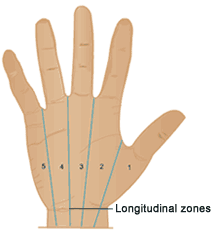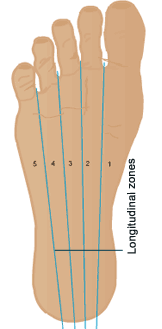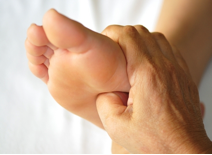 Hello and Welcome to my first contribution towards Michael’s ‘Health, Naturally’. What a great title to springboard ideas for a healthier future; to inspire through exciting anecdotes and snippets of useful information.
Hello and Welcome to my first contribution towards Michael’s ‘Health, Naturally’. What a great title to springboard ideas for a healthier future; to inspire through exciting anecdotes and snippets of useful information.
Firstly for an introduction I, Sarah Greenhalgh, have been a freelance complementary therapist for 18 years. Through my company ‘Pressures of Life’ I have helped relieve the effects of life’s stresses through a variety of different therapies; either as a practitioner or in a teaching capacity. This feature will focus on the first therapy that swept me off my feet – Reflexology.
I was fascinated how this therapy highlights imbalances in different parts of the body and has been developed in such a way that it is easy to learn and use safely. Let me explain, this therapy was developed from theories produced by two pioneers within the medical profession early in the 20th century. Dr William Fitzgerald came first with his Zone therapy he was an ear nose and throat surgeon who discovered that we have 10 longitudinal energy zones running through our body. And with experimentation he found that he could anesthetise an area in one of the zones by putting pressure on another part of that same zone; he used this within his practice.

Eunice Ingham, a physiotherapist was an advocate of Fitzgerald’s theory and decided she would try and develop it further. She believed since the energy zones ran throughout the body and could be accessed anywhere, that some areas might be more accessible and effective than others. She was right. Eunice found that the feet were more sensitive, as they were not often handled or touched and the effect of pressure on a reflex points caused a therapeutic reaction rather than just anesthetising one. By using the ten longitudinal energy lines as a guide she meticulously mapped out the entire body on the feet; plotting reflex points within this microcosm to depict organs of the body.
Now by looking at the shape of the foot it is easy to understand where the reflex points for specific organs can be found. The contours of the foot correspond beautifully with the contours of the body. Firstly, look at your big toe and see how the stem of the toe has an inward curvature before the base of the toe joins the main part of the foot. This corresponds to the neck region of the body, which also curves inward before joining the trunk of the body.
On the foot, where the little toes join there is a downward curvature from the big toe to the outside of the foot and this is where the shoulder line is found on the foot. As you can see the slope of the shoulder is similar. If you now look half way down the foot you will find it contours inward and this is where you will find the reflex points for the specific organs found in the waistline area. Finally if you put your feet together and look at your soles in a mirror, what do they remind you of?

… a pair of buttocks. This area of the foot corresponds to the pelvic region of the body that includes the buttocks, sciatic and parts of the reproductive system and urinary system.
In a reflexology treatment that you may have at a spa or in a therapy centre the norm is to have the treatment on the feet. But as a form of self-treatment between therapy sessions the hands are an invaluable tool that can boost the body after an injury or illness. It is easy to work reflex points on your hands during a busy day, all you need is 50 seconds of pressure on the recommended point, no more than 5 times a day to feel a difference. Please see a Reflexologist to obtain the recommended points that will suit your needs.
Several years ago I had a whiplash accident and used Hand Reflexology daily while walking our dog in the field, it was an ideal time when my hands were free. Within days I could feel the pain diminish and within weeks I could feel the strength of the muscles building. If you decide this form of treatment is for you; when you work your hands you may feel the discomfort in the reflex point that relates to your area of weakness, no need to worry this just means you have found the right spot and over time the pain diminishes as the body is boosted. Reflexology has been found to be extremely useful for supporting weakness in the joints or musculature and has worked effectively alongside manipulative therapies after realignment.

Through past cases and within short teaching courses I ran, students were able treat friends and family with Reflexology. Conditions the students were keen to treat included helping with stress-related infertility and enuresis (bedwetting in children). One of the most rewarding parts of my work is to pass on these skills to help others improve physically, emotionally or help prevent repercussions of stress. I do hope you have found some useful snippets within the above and there will be more to follow on stress and other therapies in the coming months.
I do hope the sun shines for you,
best wishes
Sarah


It’s lovely to see reflexology being explained and publicised. EVERYONE should know how it works and how to use it for self and family help. There are contra indications when it can’t be used, like on someone with thrombosis, or on medication( which might get moved through their system too quickly, reducing its proper effect, )during pregnancy – or at least the early months o,f etc.
There are several reflexologists in the Roseland area, including myself, and it would be great if more people were to be aware of the availability of treatments and the benefits….one guaranteed outcome is that your feet will feel like they are cushioned on air after a treatment. It is VERY important to have both feet done…not just one as the foot left untreated will feel very jealous of the one that has been!